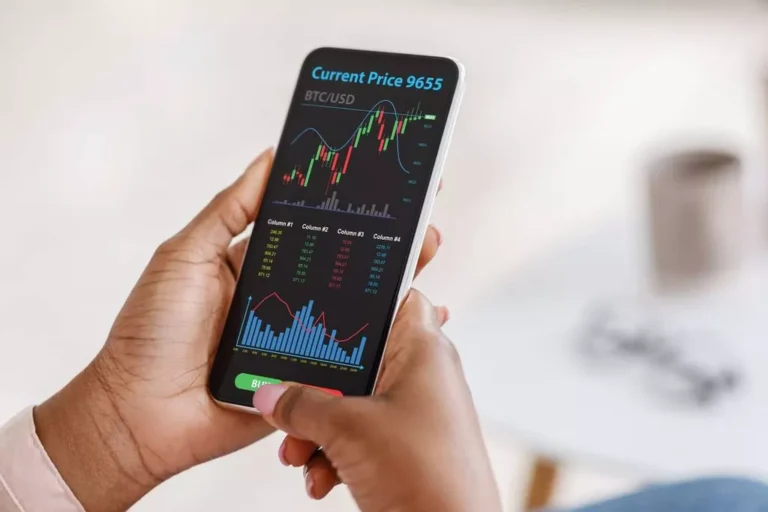Content
If you were to buy a stock, your investment’s performance would be tied to that single company, which could increase your risk. Transactions in shares of ETFs may result in brokerage commissions and may generate tax consequences. All regulated investment companies unlock superior liquidity with etfs are obliged to distribute portfolio gains to shareholders.
How Does the Choice of Index or Sector Tracked by an ETF Impact Its Liquidity?
These assets are a standard offering among the online brokers, and many major brokerages dropped their commissions on ETF trades to $0. For investors working with a financial advisor, talk with your advisor about how ETFs may help you seek to achieve your financial goals. Bond ETFs, also known as fixed-income ETFs, can provide investors access to thousands of bonds in a single trade. Trading on exchanges provides greater liquidity, and transparency in pricing and execution, which can beneficial to Bitcoin investors in the more opaque, over-the-counter bond markets. This process happens in reverse with redemption orders, if market makers need to liquidate the ETF basket delivered from the AP and return the proceeds to the seller of ETF shares. In the end, creation and redemption of ETF shares in the primary market may result in transactions in underlying security markets.
The Rise of Active ETFs: Where the Money Is Going
The material is not intended as a complete analysis of every material fact regarding any country, region, market, industry, investment, or strategy. Whilst the primary market is always available, LPs will normally only interact in the primary market (directly as APs or indirectly via another AP) on a ‘last resort’ basis. If they do choose to interact in the primary market this means that they may pay the cost of what the ETF portfolio manager requires to replicate the https://www.xcritical.com/ index or investment strategy e.g., the underlying basket.
Select the right ETF in 3 steps
Investing in international stocks and bonds can help investors reduce risk and potentially expose them to growth opportunities not available in U.S.-only portfolios. Index ETFs seek to replicate the performance of an underlying index, like the S&P 500. Many ETFs seek to track an index — also known as index or « passive » funds — wherein the ETF manager typically makes less buy and sell trades of underlying assets than an active fund manager does. This low turnover means fewer sales of stocks that have risen in price, resulting in the generation of less realized capital gains. The bulk of ETF liquidity is in the primary market, where the ETF market makers can access the liquidity of the underlying securities they hold.


The concept of liquidity in ETFs extends beyond the traditional understanding applied to individual stocks. It is a multitiered framework involving both the dealer and secondary markets. In the primary or dealer market, liquidity is facilitated through the creation and redemption mechanisms. This unique process allows for adjusting the ETF’s supply to meet investor demand, maintaining price stability. In the secondary market (i.e., the stock market), liquidity is described through the trading volume of the underlying securities in the ETF and their bid-ask spread.
- Knowing exactly what you own is important information you need when making financial decisions.
- ETFs offer three levels of liquidity—on-screen liquidity, broker-assisted liquidity and specialist-accessed liquidity.
- This competition makes execution very efficient for investors as each participant wants to show their very best price.
- Liquidity providers should offer stable and reliable feeds without any spikes or gaps on the charts.
- Exchange-traded products (ETPs) enable investors to access exposure to Bitcoin and Ethereum through the convenience of a traditional brokerage account.
- The “secondary market” liquidity seen on exchanges is important for ETF investors and traders.
David is comprehensively experienced in many facets of financial and legal research and publishing. As an Investopedia fact checker since 2020, he has validated over 1,100 articles on a wide range of financial and investment topics. Views expressed are as of the date indicated, based on the information available at that time, and may change based on market or other conditions.
They work with liquidity providers of underlying securities to source liquidity, minimize trading costs, and seek best execution. Typically, liquidity is higher during the market’s opening and closing, known as the market’s “rush hours,” because of higher trading volumes. During off-peak hours, for example, around lunchtime, liquidity may diminish, potentially leading to wider bid-ask spreads and less favorable prices for investors. While a narrower bid-ask spread frequently suggests better liquidity, a wider spread isn’t always a sign of poor liquidity. The spread can be influenced by the liquidity of the underlying assets and the efficiency of the market-making process.
There can be no assurance that an active trading market for shares of an ETF will develop or be maintained. Diversification and asset allocation may not protect against market risk or loss of principal. Exchange-traded-funds, or ETFs, can invest in a basket of securities, such as stocks, bonds, or other asset classes. ETFs offer investors the ease of stock trading, low-costs, tax-efficiency, and the diversification benefits of mutual funds.
One more important role of an ETF liquidity provider lies in keeping this market efficient. Due to LPs, shares are suggested by their true value, and during so-called stress periods, liquidity providers return prices back in the line of true value. Liquidity providers relate to the secondary market, serving as mediators between brokerage companies and investors.
Unless otherwise noted, the opinions provided are those of the speaker or author and not necessarily those of Fidelity Investments or its affiliates. Leverage can magnify the impact of adverse issuer, political, regulatory, market, or economic developments on a company. In the event of bankruptcy, a company’s creditors take precedence over its stockholders.
Primary Market The market where Authorized Participants (APs) create and redeem ETF shares in-kind, typically in blocks of 50,000 shares, which are known as creation units. Bid/Ask Spread The difference between the highest price a buyer is willing to pay for an asset and the lowest price the seller will accept to sell. Bid-ask spreads are a key measure of the liquidity of an asset or security.
Access to historical market data and the tick data is an essential part of the solution as well as a complete order book presented via FIX protocol or trading terminal offered by the LP. These risks often are heightened for investments in emerging/ developing markets or in concentrations of single countries. Investors and advisors have access to ETF on-screen liquidity via a financial website but can only see what is available to them.
Liquidity providers should offer stable and reliable feeds without any spikes or gaps on the charts. Feeds should reflect prices from the interbank foreign exchange markets and underlying instruments from a list of stock exchanges. Retail clients and brokers should have the possibility to compare those prices in a convenient way.
Index ETFs generally seek to track indexes that are comprised of many individual securities, helping to spread the risk and reduce the impact of price swings in any one security. Although this does not eliminate risk entirely, the diversified structure of ETFs has the potential to improve the risk-adjusted return of your portfolio. The technology of ETFs has empowered investors of all types to easily and conveniently access both broad market exposures, as well as more-targeted investments in previously hard-to-reach markets. Visit to view a prospectus, which includes investment objectives, risks, fees, expenses and other information that you should read and consider carefully before investing. The investor has to decide on the best course of action to protect the investment and determine whether to sell the ETF shares before the « stop trading » date or hold on to the ETF shares until liquidation.
